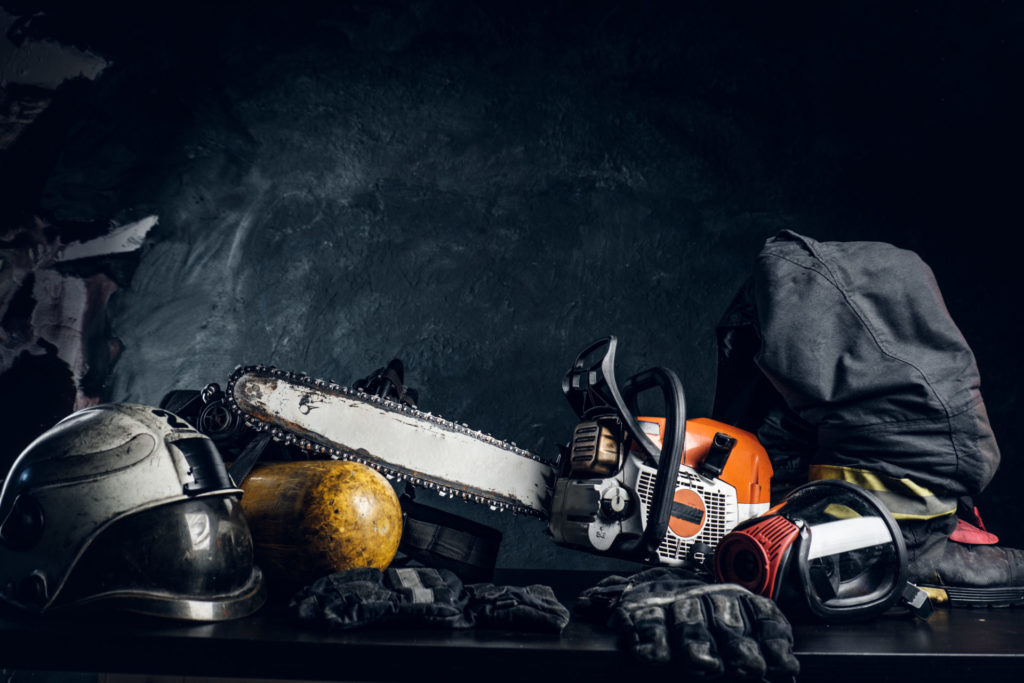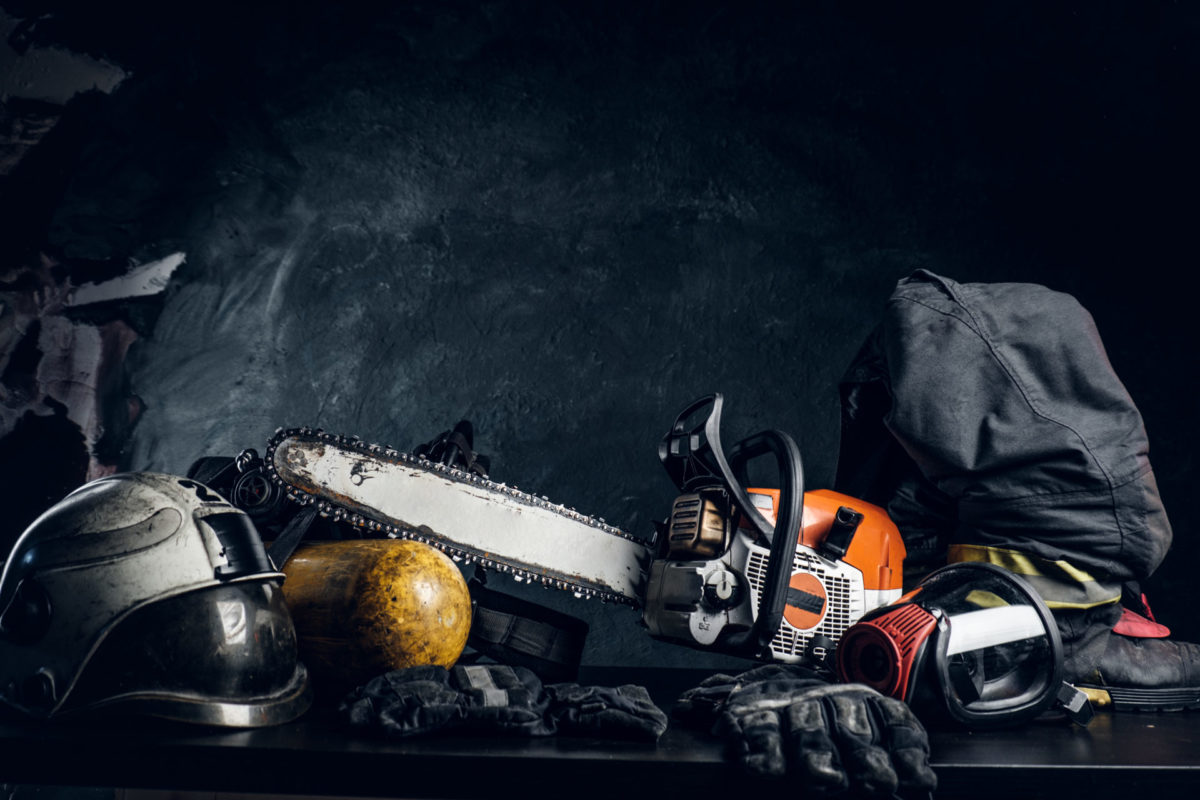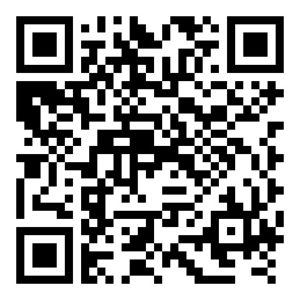Protect Yourself With Chainsaw Safety Gear
Posted on February 25, 2022 by Mike Connell

Homeowners need to protect themselves from accidents that can potentially occur while using a chainsaw. Falling limbs and moving over unlevel ground covered with timber debris to even when logs roll unexpectedly when cut. Any hazard can become dangerous and result in serious injury without correct chainsaw safety gear. With education, proper technique and personal protective equipment (PPE), homeowners can minimize the possibility of an accident. PPE is incredibly important when operating a chainsaw because even if you perform the proper technique, the situation can still take a turn for the worst. Your PPE can help minimize the risk of you receiving a serious injury when the situation goes wrong. Professional chainsaw operators use five points of protection and so should homeowners when they are out cleaning up their property or cutting down trees. These five pieces of equipment include: safety helmet, hearing protection, eye protection, chainsaw chaps or pants, and suitable footwear.
Safety Helmet
A protective hard hat will protect your head from any falling objects and should be worn as soon as you enter your work area and step out of your vehicle. It’s not going to help protect you If you forget to grab it and leave it in your vehicle. It is recommended to use a highly visible hard hat with a chin strap so it won’t fall or get knocked off.
Regardless if you wore the safety helmet just yesterday or last season, always check its condition before wearing it and assuming it will protect you. Hard hats should always be replaced if they have any dents, penetrations, plastic chip flakes, discolorations,or a chalky appearance as this means they are worn out and compromised. Also be sure to check the liner as well, if worn or broken then it needs to be replaced. It is also recommended to replace your safety helmet every three to five years.
Hearing Protection
Hearing loss is usually a cumulative issue from a constant loud noise. Your sense of hearing is essential for hearing others around you, when the tree starts to crack, and even the sounds of your machine. Hearing protection is absolutely vital to help prevent hearing loss over time. There are even safety helmets you can buy that have ear protection built in!
Eye Protection
Even though some helmets have a mesh screen to help protect the face from wood chips and other flying debris while remaining breathable, it doesn’t provide adequate protection for your eyes. So it is recommended to wear safety glasses with fog resistance and UV protection. Do not use regular eyeglasses or sunglasses as they are not resistant to impact and will shatter. If you wear prescription glasses, there are safety glasses that can fit over them or even be customized to your prescription.
Chainsaw Safety Pants
Accidents happen all the time from a log moving unexpectedly to simply dropping and brushing the chainsaw up against yourself. Since chainsaw chaps or pants are layers of tightly packed fibers that do not break when cut, they protect you from a serious injury as long as they are worn properly. This means on your body, and not in your vehicle, with all the buckles in place and snug. To ensure you are fully protected, the chainsaw chaps need to be long enough to cover the tops of your boots but not long enough to become a tripping hazard. It is also important to keep them clean as they aren’t as effective when dirty.
Don’t try to substitute with a thick pair of jeans or pants! The fibers in chainsaw safety pants are specifically designed to slow down or stop the chainsaw gears from turning. Also never try to patch up a pair of chaps as it will make them less effective. Chainsaw chaps paired with a high visibility helmet and safety vest over a long sleeve shirt can tremendously reduce the risk of injury as well as make you visible to others. This is incredibly important if you ever do get injured and can’t make it back without help or if you are in the woods during hunting season.
Chainsaw Boots
Equally as important as the rest of the chainsaw safety gear, having the right type of footwear has many benefits. Protection against a chainsaw accidentally cutting them, sharp flying wood splinters and debris, or logs rolling onto your toes.They even help provide a firm grip while traversing over unlevel ground through different terrains, and help with keeping your feet comfortable and dry in unfavorable conditions. Such mishaps occur actually quite frequently and regular safety boots or normal boots will not be able to protect you. There are 3 classes of chainsaw boots you can choose from depending on your needs and how you will be working.
Class 1:
- Steel toe cap and non-slip soles
- Lightweight
- Recommended for low speed level chainsaws
- Least amount of protect but still extremely better than regular boots
- Typically worn by tree climbers
Class 2:
- Steel toe cap and non-slip soles
- More protection over Class 1 chainsaw boots
- Made for higher level chainsaws that are faster and more powerful
- Outstanding protection for flying debris
Class 3:
- Steel toe cap and non-slip soles
- Best level of protection
- Made with extra resistive layers to protect against high speed chainsaws
- Recommended for heavy duty chainsaws
Maintenance Check for Your Chainsaw Safety Equipment
Wearing chainsaw safety gear is only effective when the equipment itself is in prime condition. Always check your equipment before wearing it out to the work area! Despite the amount of wear and tear on a piece of safety equipment, there are some areas of weakness that need to be evaluated to ensure it is working properly. Areas such as the seal around the outside of hearing protection equipment, cracking noises when squeezing a safety helmet, and even cuts in chainsaw chaps.
Remember, chainsaw safety gear helps protect against unexpected hazards and accidents. Homeowners who only use the chainsaw occasionally rather than professional chainsaw operators, who work in trained groups and are prepared for accidents, are actually more at risk of injury. Being injured and alone is not a place anyone wants to be, this is why chainsaw safety gear is so vitally important. If you have questions or want to consult with our chainsaw experts, contact us at M&K Outdoor Products.

